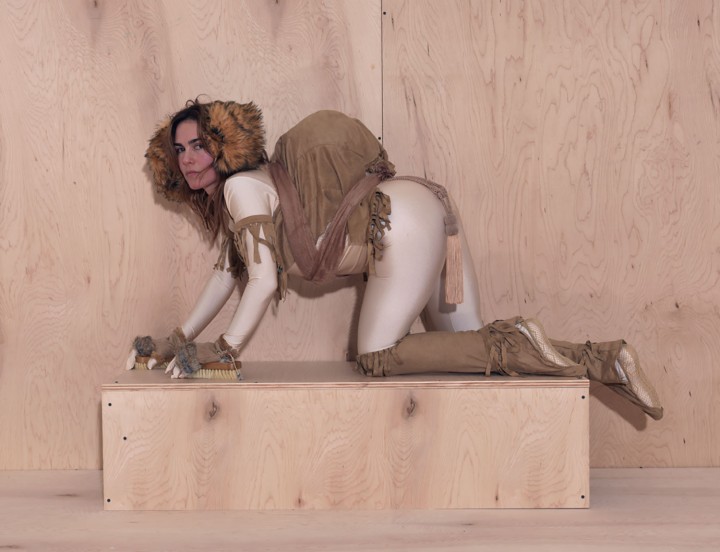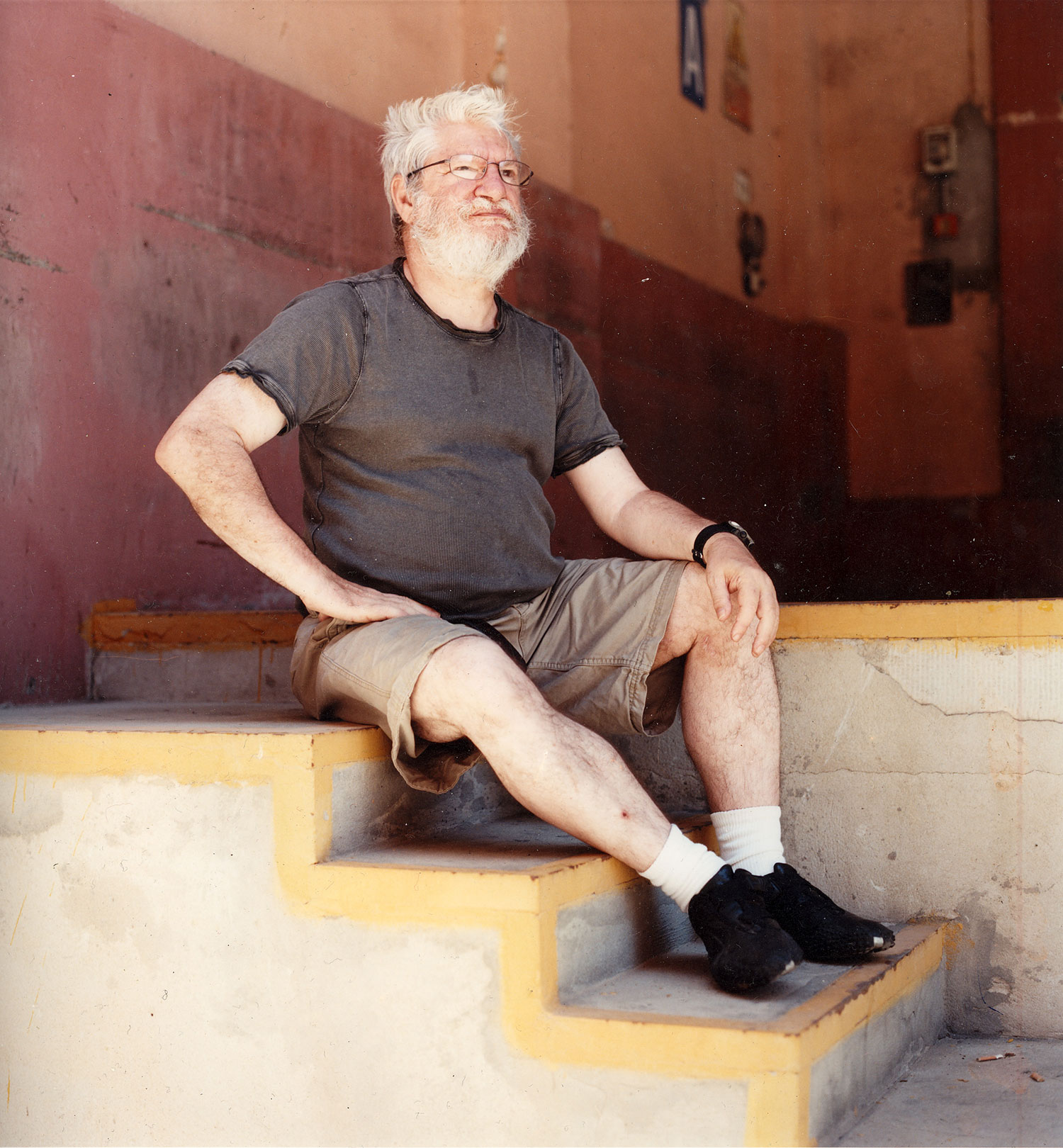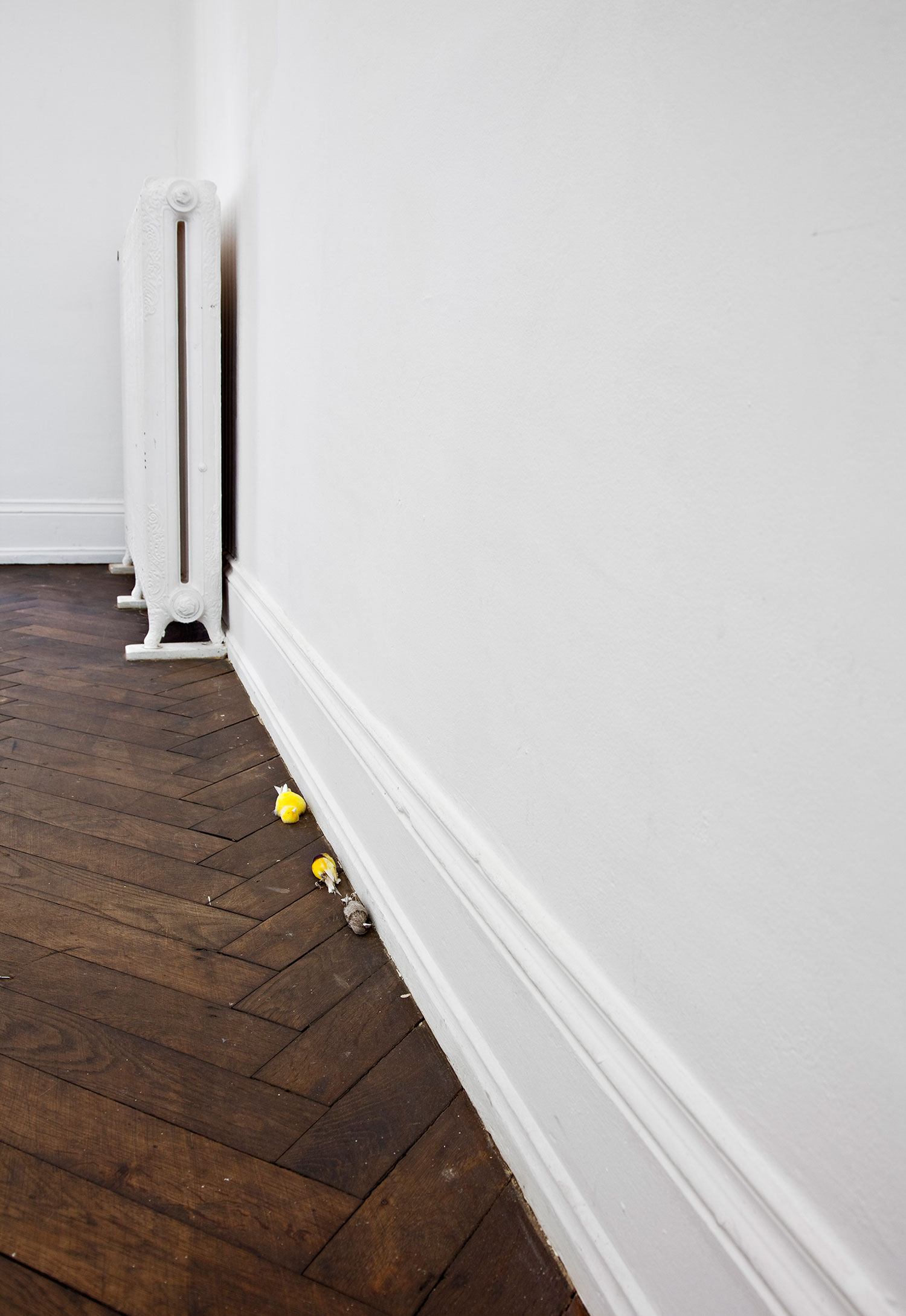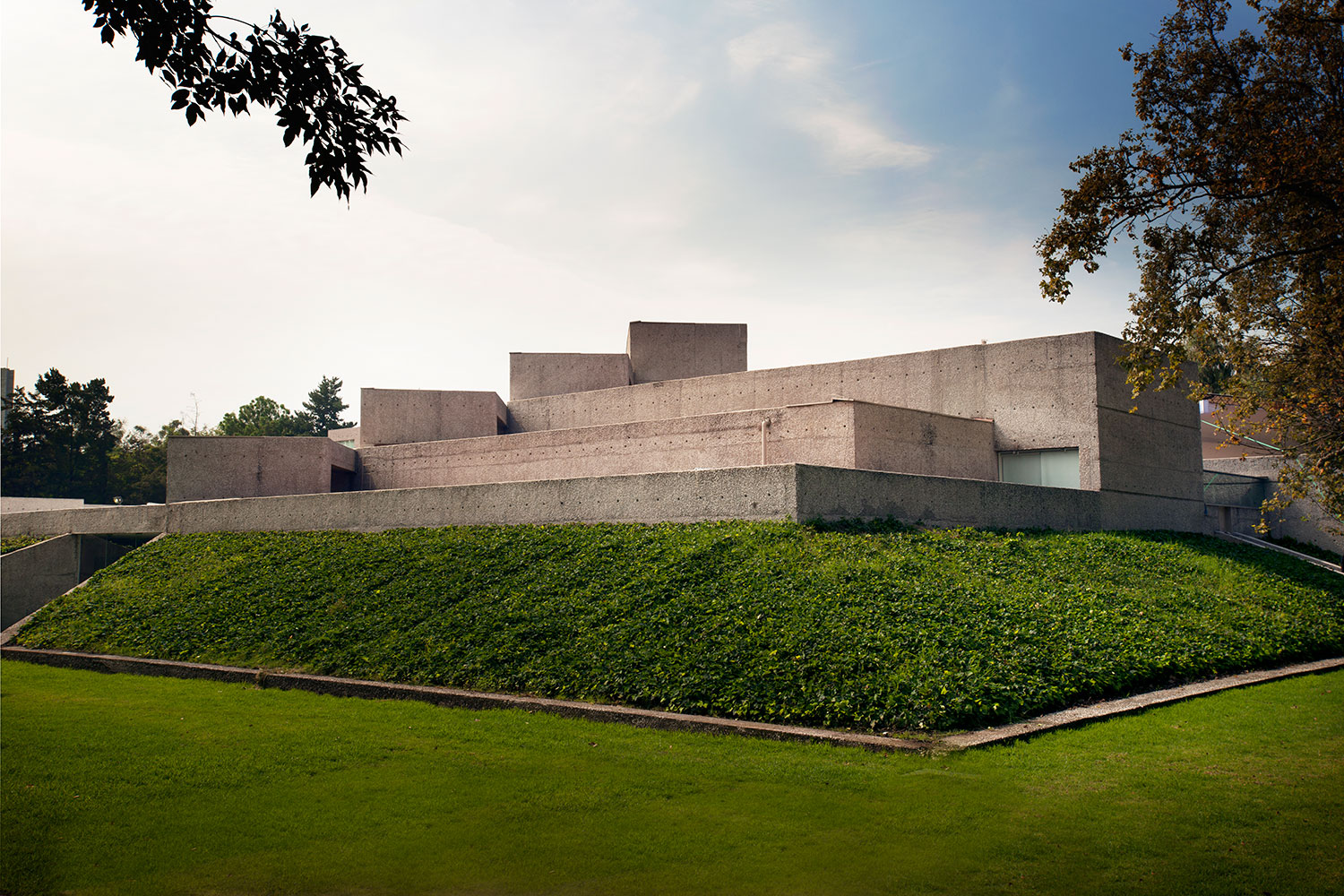
Olivier Zahm: You arrived in New York eleven years ago. What would you say to a young artist coming to New York from Switzerland or Europe?
Olaf Breuning: I would say to jump into New York and let go of the heaviness of European culture. It was kind of a release to be here, because in Switzerland you have a discussion and then things get very heavy, and here I felt so free. Here they come and say, “You have a nice sweater,” and I like that. My suggestion would be: come to New York at least for one year in order to get into the mood of the city.
OZ: Do you think New York is still the best place for a young artist to be?
OB: Maybe not to produce works. Switzerland would be better for that for example. But to be inspired and to feel free? Yes. In Switzerland you have all the Swiss artists, same as in any other place (similar influences, interests, practices). In NY there are so many artists, too many artists, so it’s definitely a good place.
OZ: Do you feel part of a community of artists here in New York?
OB: I have some friends who are artists, but I was never an artist who needed to be surrounded by art or by other artists to be happy. I am not within an art community.
OZ: Do you maintain distance from the art community?
OB: Yes, I would say so.
OZ: Why?
OB: In New York, if you are open to it, there is an opening or a party every day, and I have to protect myself from that. There are so many reasons to do things other than work. That’s why I keep a distance.


OZ: There are a lot of distractions in New York.
OB: Yes, and that’s dangerous. Also, I am turning 42 years old; I am not 22 anymore. Also, I don’t want to meet people that are mirroring what I am doing. I prefer to meet people who are not doing what I am doing; it’s more inspiring.
OZ: Do you feel part of a generation of artists, or do you see yourself as a solitary artist? Would you say that you are part of the generation of Maurizio Cattelan, Philippe Parreno and Rirkrit Tiravanija, or do you feel more connected to a younger generation?
OB: When I started to be a professional artist it was the time when Maurizio Cattelan was getting bigger, so I would say I started during that period. But the funny thing is that my work over the last fifteen years transformed. I happen to be in many shows with younger artists, so my work sometimes fits in again with the new generation. Plus, I think these days it’s very difficult to speak about generations because there are no generations anymore; all things happen in one year.
OZ: So there is a generation every year?
OB: It seems. Things get very fast in the art world.
OZ: You come from a place in Switzerland called Schaffhausen. Can you describe this town?
OB: It’s a very picturesque, beautiful town with houses from the Middle Ages. We also have the Rheinfalls — it’s very lovely and small.
OZ: Is it a town for amateur painters and romantic weekends?
OB: Definitely. I actually grew up by the river, so in the summer you can swim there. I don’t want to go back, but I think very highly of it.

OZ: Maybe you will go back one day! What kind of family do you come from? Is it an art family? An educated or working-class family?
OB: A would say an art family. My father was a graphic designer, and my mother was interested in art. I never had problems telling my family, “Now I am a contemporary artist.” They always thought it was great. They didn’t want me to be a doctor or a banker.
OZ: So your father is a graphic designer. And your mother?
OB: My father used to do graphic design and window displays. Now he’s retired, while my mother died of cancer when I was eighteen. She was mostly at home, being a mother, but she was also doing side jobs with a connection to art. The whole family was into art. My father makes music; he was a big blues musician in Switzerland.
OZ: What pushed you to New York? Did you live in other cities in Europe before moving here?
OB: When I became a very hot artist in Switzerland I got all the stipends you could win, and one of them was a one-year grant in New York, which was given by the city of Zurich. So they sent me here, and I lived in this big loft on West Broadway. It was a beautiful place, which they don’t have anymore. After I lived there for one year I fell in love with the city and decided to stay. Eventually I moved to Chinatown.
OZ: Was it a culture shock to move to New York from Switzerland?
OB: My English was very bad. I could not really talk. It was difficult to communicate, but I felt happy like a clam. I was here, and I knew this was the place I wanted to be.
OZ: Was it right after 9/11?
OB: Right before. It happened a year after I moved, and I was already living in Chinatown.

OZ: So you experienced New York’s first political trauma.
OB: I was not unhappy to be here; it was a very intense and interesting time. Beside the people who died, which was horrible, I must say that to be here in the city during that moment was very dramatic. Were you here?
OZ: I was. You could feel it was a transitional period, when some people suddenly wanted to leave the city.
OB: But for those who stayed in New York it was a very loving time. People were very sensitive and paranoid at the same time. I felt very close to the people who stayed. It was strange.
OZ: So in New York your art makes sense.
OB: I don’t know. It doesn’t really matter whether my art makes sense in China or Thailand. I hope I do art not only for a city or a country.
OZ: Do you think that art can be a universal language?
OB: Not that it “can be” — it is. Let’s consider the drawing book we did together; any idiot can understand it. I strongly believe that as a contemporary artist I have a mission to speak not only about internal and elitist questions but also to speak about things people can understand.
OZ: I also feel you like the tension — or the conflict — between Western and exotic culture. You like to travel and to have your work dialoging and interacting with spaces in the middle of Africa, where the art world is a total fiction.
OB: Yes, but it could be any culture, either Papua New Guinea or Japan. It doesn’t matter. It’s more like: the West is my heritage, where I come from, this is how my brain works, and the rest is unknown. I like to cross that border and have a reaction to it. It’s a human thing. You think you know it all, and then you encounter things that are completely different or strange.
OZ: You are experimenting with the possibility of a dialogue.
OB: Yes, because the dialogue is different whether I speak to you here or to someone in Africa. I like to see it with my “Western glasses” on. I don’t try to understand African culture when I go to shoot a movie there. I go there to be perplexed, to ask questions. It’s more like a monologue rather than a dialogue. It’s my perspective.
OZ: So you are also a sort of traveler between cultures and different contexts. You don’t want to just stay in the art world; you want to experience the world in your way, which is sometimes not naïve but still very spontaneous. You don’t necessarily arrive with a pre-determined perspective — you just go there.
OB: Sometimes I actually have a micro-concept. I always say, “I want to speak about my life,” and my life is bigger than just the art world. I am an artist — and this is beautiful — but it’s not enough. It would be boring to just talk about and to the art world.

OZ: When I read interviews with you I can see that people are really confused about your movement between different media, from photography to film or from installation to drawing. Do you feel your art is misunderstood? Would it be better understood if it focused on a single medium?
OB: Maybe. But as you know, I don’t give a shit. What I know is that for fifteen years I’ve liked making art, and I want to do it for the next twenty, thirty or forty years. That’s my goal. You have an artist like On Kawara, he had one single conceptual idea. I feel that reality is so colorful around us; it’s changing too fast and I want keep up with that. This is my life, this is the time, and I want to go further. And as long as I can pay the rent, I don’t give a shit.
OZ: It’s also that your art is really tied to your life and to your own personal evolution. You compare your art research to a diary.
OB: Yes. A diary is something you do because you want to keep track of something in your life that seems to be going away very quickly. With a diary you can hold things back. It is like what you do with your Purple Diary, which I find very nice. I hope when I am a seventy-year-old man I can look back. Even now, after fifteen years of working, I am excited about what I’ve “touched”: I went to Easter Island, I went to Papua New Guinea, I hired prostitutes, I did all these things in my work that made me happy. The difference between a diary and what I do is that you can put your diary under your pillow and show it to nobody. Obviously I like to show my stuff, and that’s why I am an artist!
OZ: You show it, but you also like to create a reaction — you like to provoke. You are not only collecting and expressing your own emotions: you want to force people to react in a way.
OB: I was shooting this movie entitled Home 3, which is all about New York, and that I presented at the Swiss institute in September. When I shot it and watched it on my computer I sometimes laughed, I was so happy. One night two friends came for dinner and I showed it to them — it was unfinished then — and then I felt so embarrassed. I thought, “What will people think about this? Will they think this is too stupid or too primitive?” Nevertheless, I can say that I work for myself in order to have my own pleasure. For sure, I am happy if people like it, but I don’t expect anything. My concept is not to provoke others.
OZ: So does New York have a primitive perspective?
OB: This is my perspective. I tried to show our time, to show a character who is no longer able to focus on anything. He is naïve and sweet at the same time, and he goes through the city in order to have different experiences.
OZ: When you came to New York, you came to forget everything and rediscover an immediate relationship to culture. Do you think everything has been done in art?
OB: I guess Picasso in circa 1910 would say that. What I do believe is that the speed of things is incredible. The art world runs one direction and then another direction; one year it’s Chinese art, then painting, then conceptual art, and then it seems there is no orientation anymore. Probably this situation comes from the fact that most of the artworks have been done. The big, pioneering works have been done. Or maybe new things will come. I would be excited to spill some colors on the floor, but I cannot do it anymore because Jackson Pollock did it, and we reserve it for him. Like his drips, there are a thousand other works that someone did already, so the moment you do that, it becomes a remake. This is what is happening at the moment. Many artists speak about what happened in the past, trying to figure something out. I don’t say it is bad, but I still believe that I can make one or two pioneering works that will be considered new. Maybe…





